Picture a world where your phone anticipates the next word before you type it, or your car takes you home without human intervention. Thanks to unprecedented advances in AI technology, these scenarios are no longer confined to sci-fi movies. However, as we usher in this new era of automation and innovation, many people are asking whether or not AI is safe to use.
The answer isn’t as straightforward as I’d like it to be. Let’s go over some potential risks associated with AI use and how these concerns can be managed.
What is the risk of using AI?
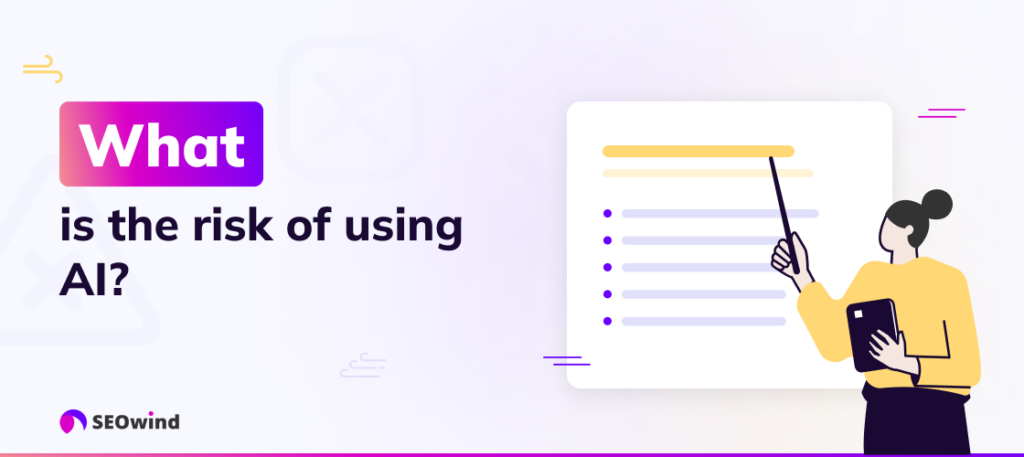
The risks associated with AI are multifaceted and require careful consideration. Here are some key areas of concern:
Security Concerns: Data Privacy and Cyber Vulnerabilities
An artificially intelligent system learns from the data fed into it. So, what happens if malevolent entities access that data? Data privacy and cybersecurity are prime concerns related to utilizing AI. As Richard Blumenthal, a US Senator, rightly said: “We need to do what has been done for airline safety, car safety, drug safety… AI safety is no different—in fact, potentially even more dangerous.”
Ethical Dilemmas and Bias in AI Systems
Another significant issue with the use of AI is ethical challenges. Bias is inevitable when humans develop systems because we all have inherent biases that can influence how an AI system makes decisions. This can result in discrimination or unfair outcomes.
Job Displacement Due to AI Automation
Many jobs are predicted to vanish due to advancements in automated systems and robots. Industries like manufacturing and transportation are already witnessing this wave of change, with AI assuming control over various tasks previously performed by humans.
Societal Impact: Surveillance, Manipulation, and Inequality
AI applications in society can lead to surveillance issues. With powerful image recognition software, predicting behavior patterns has become easier than ever before, potentially leading to manipulation and further societal disparities.
The Benefits of AI
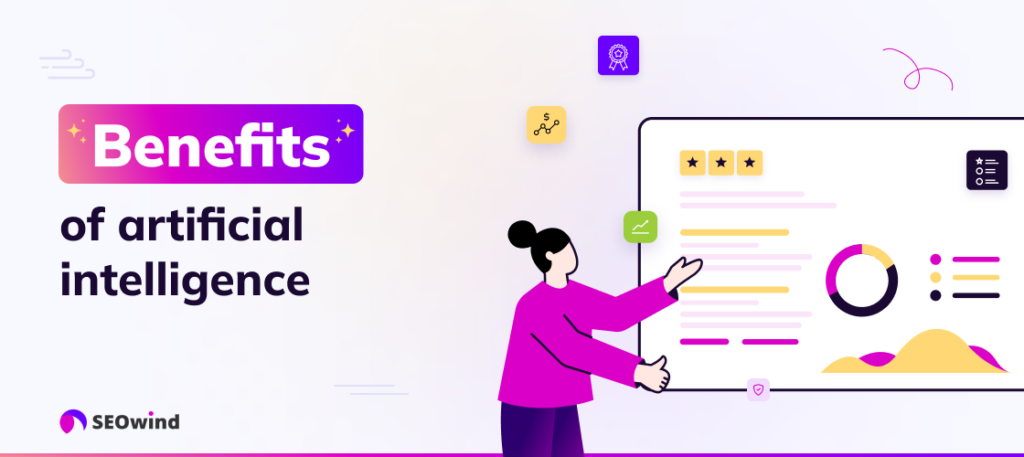
While it’s crucial to be aware of the risks and potential pitfalls related to AI, a discussion of its strengths and pitfalls will not be complete without acknowledging the technology’s numerous benefits. These range from enhanced efficiency to significant advancements in healthcare and a pivotal role in environmental conservation and sustainability.
Enhanced Efficiency and Productivity in Various Fields
AI is often hailed for its ability to perform tasks quickly and accurately, thus enhancing efficiency. For instance:
- In manufacturing, AI-enabled robots can manage repetitive tasks with precision, reducing human error.
- The retail industry leverages AI for customer analytics, forecasting sales trends, and managing inventory.
- In the finance sector, AI applications automate processes like credit scoring and fraud detection, thereby increasing accuracy and productivity.
These are just a few examples; nearly every industry is witnessing transformative changes due to AI implementation.
Another case study worth mentioning is SEOwind’s use of AI to create an innovative tool that enables companies to scale up their content creation process significantly by leveraging complex algorithms while maintaining a natural human tone throughout their text.
Advancements in Healthcare Through AI Innovations
Healthcare is another key sector where AI has had a major positive impact. This includes harnessing patient data for personalized treatment plans, predictive analysis for better diagnosis, and robot-assisted surgeries that result in precise surgical outcomes.
AI-driven algorithms can analyze vast datasets within seconds, aiding doctors in identifying patterns or anomalies that might go unnoticed due to human limitations. Additionally, telemedicine facilities boost accessibility by allowing remotely located patients to opt for virtual consultations, thus breaking geographical barriers!
Digital assistants utilize cognitive technologies to streamline administrative healthcare services, saving considerable time and allowing clinicians to spend more face-to-face time with their patients.
AI’s Role in Environmental Conservation and Sustainability
The power of AI to sift through enormous datasets makes it an effective tool for maintaining biodiversity, predicting natural disasters, or analyzing climate change patterns.
Automated systems aid efficient energy use by monitoring consumption patterns and suggesting optimal usage. Additionally, using AI to manage waste or water resources enables more accurate predictions, resulting in better planning and allocation.
So, after understanding these benefits, can we deduce that AI has the potential for significant good? Hopefully!
Mitigating the risks: strategies for safer AI use
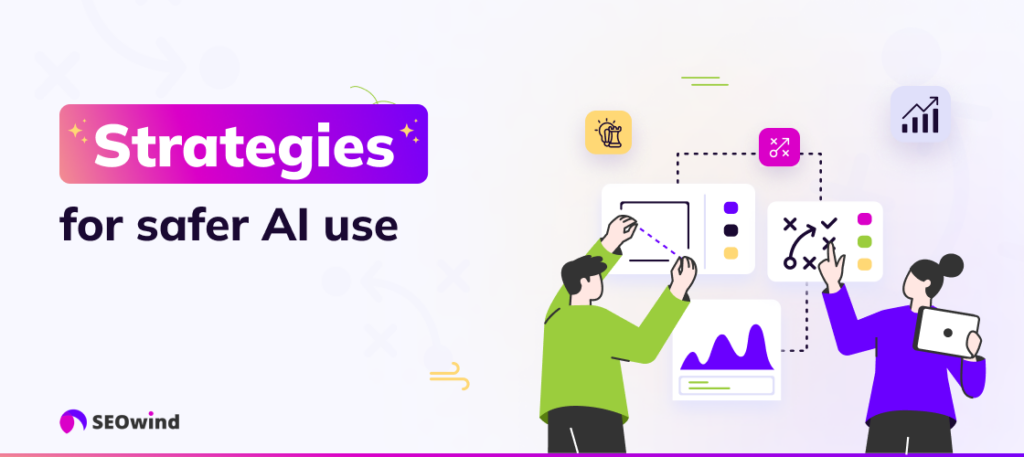
Even as an enthusiastic advocate of AI and its plethora of applications, I cannot ignore the numerous concerns concerning its safety. To ensure the safe use of this technology, we have to address these issues actively. Here are some strategies that could mitigate potential risks.
Legal Regulations and Global Standards for AI Governance
Governments and international bodies should implement rules governing the use of AI. By establishing clear legislation around data privacy, cybersecurity, and ethical guidelines in AI development, safer practices can become mandated rather than optional.
In addition to local regulations, we need global standards in AI governance. International consensus could drive uniformity in such policies. With universal guidelines, it will be easier to tackle cross-border cybersecurity threats and effectively manage how multinational corporations employ these solutions.
Fostering Public Awareness and Understanding of AI
Secondly, it’s pivotal to foster public awareness about AI. As Aiden Gomez from Cohere says, “Trust comes from transparency and control.” People often fear what they don’t understand so that demystifying AI could alleviate widespread apprehension about its use.
This means educating people on how the technology works as well as its potential and constraints. Addressing misconceptions would empower users to make more informed decisions about interacting with this powerful tool.
Establishing Ethical Standards for AI Use
We also need consensus on ethical standards for AI. As society progresses morally and ethically, our tech should do the same.
Ethical guidelines should include fairness (elimination of bias), accountability (AI designers held responsible for outcomes), and transparency (how algorithms arrive at decisions). Ensuring that everyone involved in creating or using AI upholds these principles helps prevent misuse or harmful consequences arising from biased or uncontrolled AI systems.
Educating on the Importance of Data Privacy
Finally, educating people about the importance of data privacy is paramount. With AI’s reliance on big data, it’s crucial that users understand what information they’re divulging and to whom.
Furthermore, we should encourage secure data-sharing methods, such as using encrypted platforms and regularly updating privacy settings on social media. By bolstering individual-level safeguarding practices while implementing systemic regulations, we can make AI safer to use.
By implementing legal regulations and ethical standards while expanding public awareness and data privacy education, it is possible to mitigate most of the risks associated with AI applications and secure technology-driven progress without compromising safety.
Raising awareness: The importance of understanding AI technologies
In an era where AI forms the backbone of several industries and plays a pivotal role in shaping our future, comprehension of this sophisticated technology is no longer optional. It’s crucial to foster a widespread understanding of AI technologies to dispel misconceptions, gauge their capabilities and limitations, and ultimately determine whether AI is safe to use.
Misconceptions Surrounding AI Risks
Regrettably, many myths exist concerning the risks associated with AI. These misconceptions often overemphasize the threats that AI may pose without substantiating such claims with facts or empirical evidence. Some of these myths include:
- AI will replace humans entirely.
- All robots are AIs.
- AI can solve any problem.
These skewed perceptions create unfounded fear and apprehension about the adoption of valuable technological advancements.
It is vital for businesses and individuals alike to invest time into properly understanding these technologies before making judgments about their safety.
The Need for Public Education on AI Capabilities and Limitations
We need to understand its abilities and limitations to appreciate whether AI is safe to use truly. Education is crucial for this, as it enables better decision-making when employing these technologies.
The general public should be informed about how:
- While AI streamlines many processes, it is a tool designed by human programmers and, as such, has its own set of limitations.
- For continued smooth operation, AI solutions need maintenance and periodic updates.
- The ethical implementation ensures AIs follow established guidelines and laws.
Fostering awareness about such nuances leads to a broader appreciation of technological advancement. Ultimately, it stimulates a healthy discourse on the use of AI, which eventually contributes to its safe application across various sectors.
The role of human oversight in the age of AI
As much as AI can provide undeniable benefits, ethical considerations, and potential vulnerabilities will always require vigilant monitoring. Let’s explore the importance and complexity of human intervention in AI-based systems.
Ensuring AI Systems Abide by Ethical Norms
AI algorithms learn through data. Therefore, they can quickly adopt biases drawn from their training datasets, which inevitably impact how they perform their tasks afterward. Keep in mind that despite advancements in machine learning, AI still lacks innate understanding or empathy. Knowing this, human guidelines and interventions ensure that these systems abide by ethical norms.
Prompt Responses to Unpredicted Behaviors
AI technology is known to possess an element of unpredictability due to its ability to self-learn and adapt. While this is a powerful tool, it may also result in impromptu behavior that leads to unprecedented consequences that require a swift, human-led response.
Constant Evaluation for Improvement
Performance evaluations shouldn’t be solely dependent on algorithmic analysis. Humans add a layer of introspection, ensuring systems better serve their purpose without overstepping boundaries set by societal norms and regulations.
No matter how sophisticated AI becomes, we cannot overlook people’s role in building and maintaining these systems under constant monitoring and control.
Is AI safe to use for content writing?
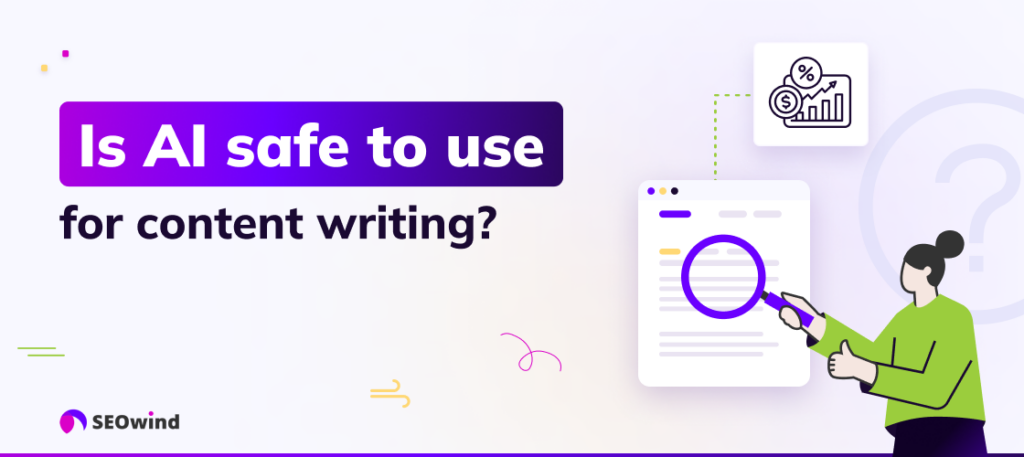
Integrating AI in content writing has sparked numerous discussions and debates, especially concerning its safety and potential impact on the industry. So, is AI safe to use in content writing? The answer is nuanced and depends mainly on the approach and methods employed.
Bridging Human Expertise with AI
One practical approach emphasizes collaboration between humans and AI to achieve enhanced content creation efficiency. This methodology, known as the CyborgMethod™, optimizes the advantages we can derive from utilizing AI while bypassing its limitations. It takes into account different aspects of content creation, including outlining drafts or briefs, full-scale articles, and later revisions.
Using this harmonious blend of human creativity and machine capabilities, we can safely deploy AI for content writing when proper strategies are employed. However, it’s worth noting that at the core of the CyborgMethod™ is SEOwind’s principle of producing quality content rather than spammy, algorithm-beating material that provides no value to readers.
As Najah Phillips, a senior product marketing manager at Salesforce, says, “The future of consumer goods is Data + AI + CRM + Trust.” This sentiment effectively captures how critical trust and meaningful engagement are.
The Role of SEOwind
Just how does my company fit into all of this? Well, SEOwind is your creative accomplice when you need to rapidly achieve high-quality results based on detailed research and valuable SEO insights.
SEOwind plays a crucial role in providing article writers with the helpful tools and smart optimization practices they need to create content that drives relevant traffic.
For SEOwind, AI isn’t about removing the human touch in content writing. Instead, it’s about how humans and AI can collaborate to create an irreplaceable synergy that yields effective outcomes. In other words, they primarily practice what they preach: adherence to CyborgMethod’s principle, which encourages cooperation between humans and tech for a more robust result.

Making AI Safe
By incorporating these rigorous, top-grade strategies, SEOwind ensures that you can craft high-quality articles with AI assistance. Exploring new territories should be exciting; asking questions about the safety of AI, particularly in content writing, shows us that we are indeed ready for the next frontier of technology-backed solutions.
This means that it is crucial to adapt to these advancements and partner with industry leaders who aim for nothing but the best in adopting safe AI applications.
So yes, when it comes to the safety of using AI, I can say with absolute confidence that it is when used correctly!
Is AI harmful or helpful?
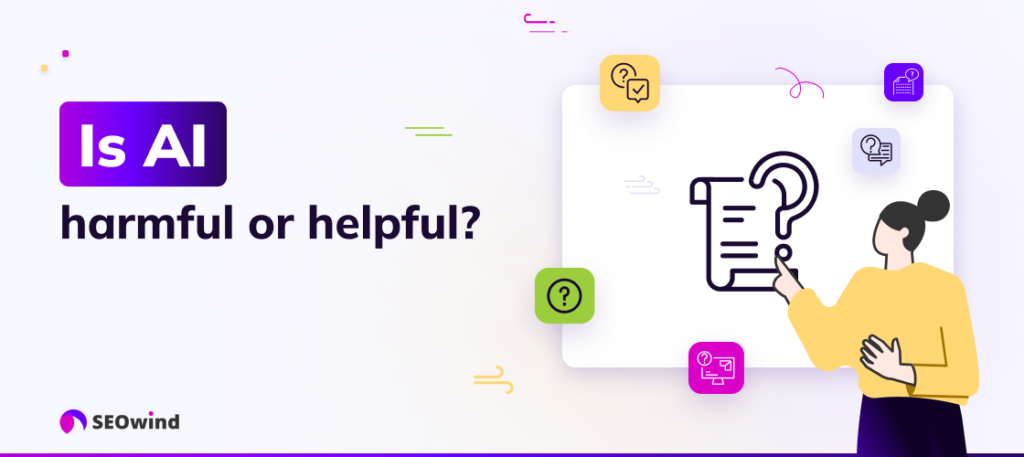
Whether artificial intelligence is good or bad isn’t a question with a simple answer. It’s like asking if fire is good or bad – it has the potential for creation and destruction. AI, in its essence, is a tool. Its impact depends mainly on the hands that wield it and the intentions behind its use.
AI has demonstrably improved lives in countless ways. From medical diagnoses to disaster prediction, it tackles complex challenges with speed and precision that often surpasses human capabilities. Analyzing vast amounts of data allows AI to identify patterns and insights that would otherwise remain hidden. This leads to breakthroughs in scientific research, optimized business strategies, and personalized learning experiences.
However, AI also presents significant risks. Bias in algorithms can perpetuate discrimination, while autonomous weapons raise ethical concerns about the future of warfare. Job displacement due to automation is a growing concern, and the potential for AI to be used for malicious purposes, such as mass surveillance or spreading misinformation, cannot be ignored.


